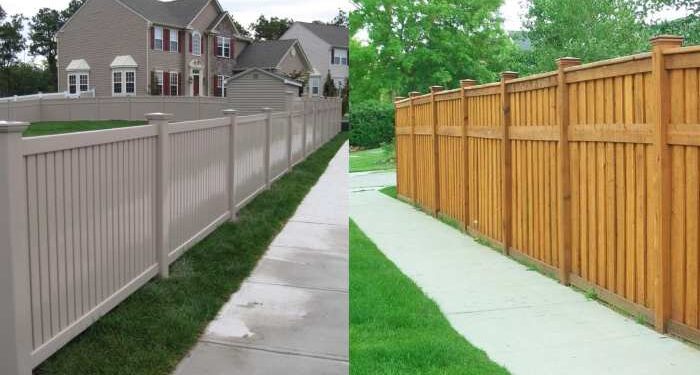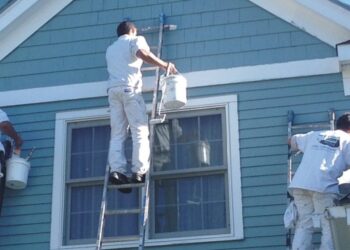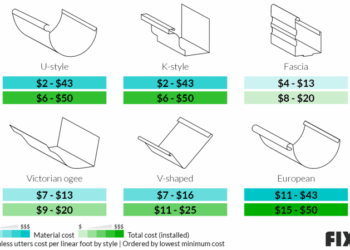Delving into the realm of vinyl fencing vs wood fencing, this introductory paragraph aims to draw in readers with an intriguing overview of the topic. The discussion unfolds with each detail, shedding light on the key characteristics and features of both types of fencing materials.
Overview of Vinyl Fencing and Wood Fencing
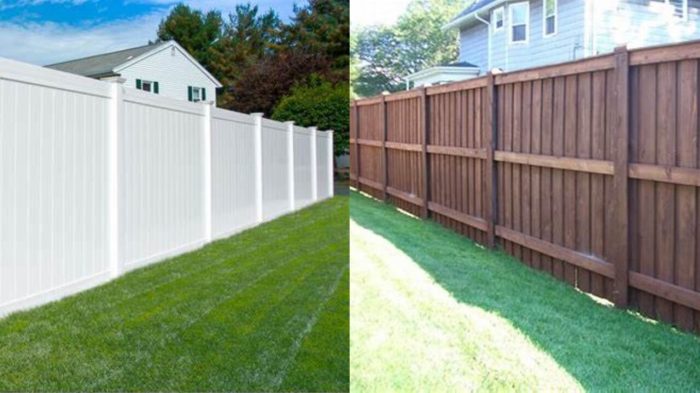
Vinyl fencing is a popular choice for homeowners due to its durability and low maintenance. It is made of PVC (polyvinyl chloride) material, which is resistant to rot, decay, and insect damage. Vinyl fencing comes in a variety of colors and styles, offering a sleek and modern look for any property.Wood fencing, on the other hand, has a classic and natural appeal.
It is typically made of cedar, pine, or redwood and can be stained or painted to match the aesthetic of the property. Wood fencing is versatile and can be customized to fit different design preferences, making it a timeless choice for many homeowners.
Key Characteristics of Vinyl Fencing
- Low maintenance: Does not require painting or staining
- Durable: Resistant to rot, decay, and insect damage
- Variety of styles and colors available
- Long-lasting: Can withstand harsh weather conditions
Main Features of Wood Fencing
- Natural and classic look
- Customizable: Can be stained or painted
- Versatile: Can fit different design preferences
- Environmentally friendly option
Durability and Maintenance
When it comes to choosing between vinyl fencing and wood fencing, durability and maintenance are crucial factors to consider. Let's explore how these two types of fencing materials stack up in terms of longevity and care requirements.
Durability
- Vinyl fencing is known for its exceptional durability, as it is resistant to rot, decay, and pests that can damage wood fencing over time.
- Wood fencing, on the other hand, is susceptible to rot, warping, and insect infestations if not properly maintained and treated.
- In general, vinyl fencing tends to have a longer lifespan than wood fencing due to its ability to withstand harsh weather conditions and environmental factors.
Maintenance
- Vinyl fencing is relatively low maintenance, requiring occasional cleaning with soap and water to remove dirt and debris. It does not need to be stained or painted like wood fencing.
- Wood fencing, on the other hand, requires regular maintenance such as staining, painting, and sealing to protect it from the elements and prevent decay. This maintenance can be time-consuming and costly over the years.
- It is important to inspect wood fencing regularly for signs of damage or wear and tear, whereas vinyl fencing typically requires less frequent inspection and upkeep.
Cost Comparison
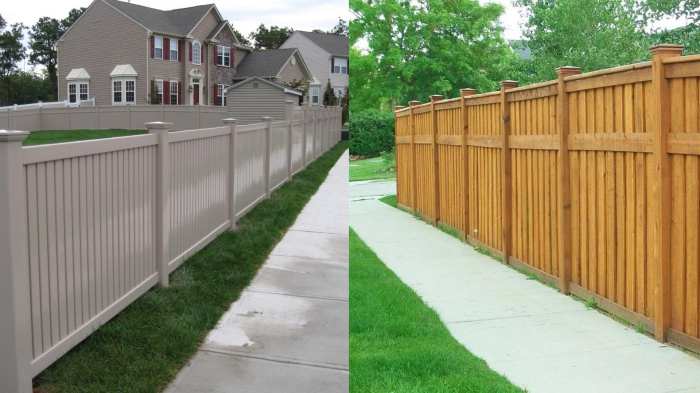
When comparing the cost of vinyl fencing versus wood fencing, it is important to consider various factors that contribute to the overall price of each type of fencing. While initial costs may vary, long-term maintenance and durability should also be taken into account to determine the most cost-effective option for your needs.
Cost of Materials
- Vinyl fencing typically has a higher upfront cost compared to wood fencing. The cost of materials for vinyl fencing is generally higher due to the manufacturing process and the quality of the materials used.
- Wood fencing, on the other hand, may have a lower initial cost as the materials are more readily available and easier to install. However, the quality of the wood and the maintenance required can impact the overall cost over time.
Installation Costs
- Installation costs for vinyl fencing are often higher than wood fencing due to the specialized tools and skills required for proper installation. Additionally, the weight and size of vinyl fencing materials can make installation more labor-intensive.
- Wood fencing installation costs may be lower as the materials are typically lighter and easier to work with. However, the longevity of wood fencing may be impacted by the quality of installation and the maintenance required.
Maintenance Expenses
- Vinyl fencing is known for its low maintenance requirements, which can help save costs over time. Minimal upkeep such as occasional cleaning is usually all that is needed to keep vinyl fencing looking new.
- Wood fencing, on the other hand, may require more maintenance over the years. Staining, sealing, and repairs due to rot or insect damage can add to the overall cost of maintaining wood fencing.
Environmental Impact
When it comes to the environmental impact of fencing materials, it's essential to consider the production process and long-term sustainability factors.
Vinyl Fencing Production
- Manufacturing vinyl fencing involves the use of chemicals and fossil fuels, contributing to carbon emissions and pollution.
- The production of vinyl fencing also leads to the generation of toxic byproducts that can harm the environment.
- Due to the synthetic nature of vinyl, it is not biodegradable and can take hundreds of years to decompose in landfills.
Eco-friendliness of Wood Fencing
- Wood fencing, on the other hand, is considered more environmentally friendly as it is a natural, renewable resource.
- Wood can be sustainably sourced from responsibly managed forests, reducing the impact on deforestation and preserving biodiversity.
- Wood fencing is biodegradable and can decompose naturally at the end of its lifecycle, minimizing long-term environmental harm.
Outcome Summary
Wrapping up our exploration of vinyl fencing vs wood fencing, the concluding paragraph offers a compelling summary of the comparison. It encapsulates the key points discussed, leaving readers with a clear understanding of the differences between the two materials.
Query Resolution
What are the main features of vinyl fencing?
Vinyl fencing is known for its durability, low maintenance requirements, and resistance to elements like rot and insects.
How do the maintenance requirements of vinyl fencing compare to wood fencing?
Vinyl fencing requires minimal maintenance, usually limited to occasional cleaning, while wood fencing may need regular staining or painting to maintain its appearance and prevent decay.
What factors contribute to the cost differences between vinyl fencing and wood fencing?
The material costs, installation expenses, and long-term maintenance needs play a significant role in determining the overall cost of vinyl fencing compared to wood fencing.
What is the environmental impact of vinyl fencing production?
Vinyl fencing production can have negative environmental consequences due to the manufacturing process and the use of non-biodegradable materials.
Is wood fencing more eco-friendly compared to vinyl fencing?
Wood fencing is generally considered more eco-friendly than vinyl fencing because wood is a renewable resource and biodegradable, making it a more sustainable option.

